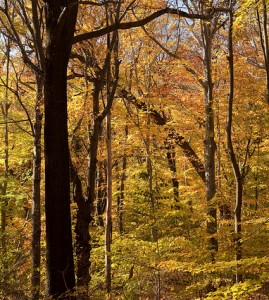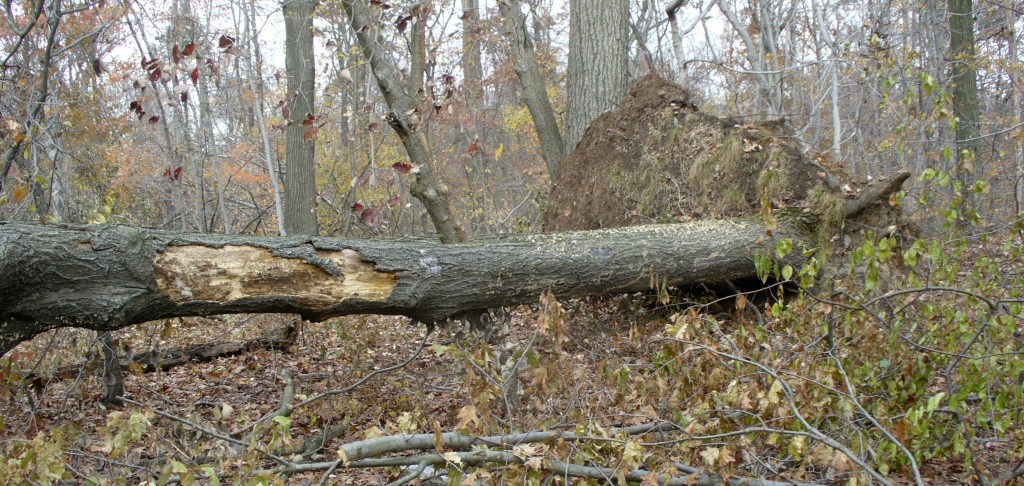An Ever Changing Forest
Posted in Around the Garden, Gardens and Collections on December 6 2012, by Travis Beck
Travis Beck is the NYBG’s Landscape and Garden Projects Manager, overseeing large landscape design and construction projects here at the Garden. His current undertakings include the redesign of the Native Plant Garden and trail restorations taking place in the Thain Family Forest.
 The Thain Family Forest at The New York Botanical Garden is a remnant of the deciduous forest that once covered most of the region. Unlike many of the remaining forests, the Thain Family Forest was never cleared for timber or agriculture, and includes numerous grand trees. Today, many of these are well over a century old.
The Thain Family Forest at The New York Botanical Garden is a remnant of the deciduous forest that once covered most of the region. Unlike many of the remaining forests, the Thain Family Forest was never cleared for timber or agriculture, and includes numerous grand trees. Today, many of these are well over a century old.
Superstorm Sandy reminds us, however, that humans are not the only ones to fell trees. Her strong winds uprooted or snapped the trunks of over one hundred trees in the Forest. Where these trees fell, gaps now exist in the canopy, creating opportunities for the next generation of trees to grow. Our records show that Sandy was the most damaging storm in the Garden’s history to impact the Forest, but hurricanes, nor’easters, and thunderstorms are part of the natural disturbance regime for northeastern forests. Such storms open gaps in the canopy and allow for new growth to fill the space.

At the same time, the coarse woody debris from the trunks and branches of felled trees slowly recycles back into the soil to provide nutrients for this next generation of plant life. The Forest is not a uniform stand of tall and stately trees, but a patchwork of such gaps–some recent, some filled with trees a few decades old, and some so fully grown in that you would doubt they had ever been disturbed. Precisely because it is able to endlessly reconfigure itself in this way, the Forest has proven to be remarkably resilient.
A lifelong student of forests, ecologist Daniel Botkin visited the Thain Family Forest not long after the storm, and was moved to write an article on the woodland we have here at the NYBG. To see the same dynamic nature of a living forest as he did, we encourage you to come and visit for yourself.
For more on the work of Travis Beck and the concepts that go into designing the NYBG’s vistas and collections, keep an eye out for his new book–Principles of Ecological Landscape Design—available from Island Press.

